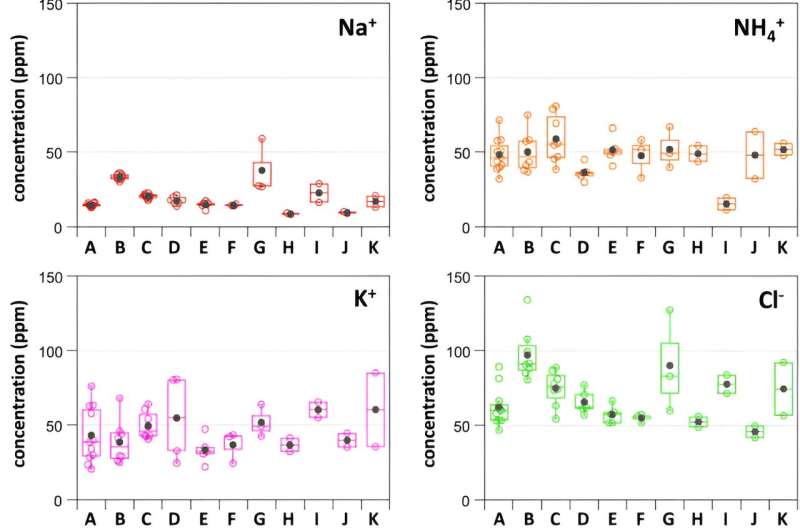This article has been reviewed according to Science X's editorial process and policies. Editors have highlighted the following attributes while ensuring the content's credibility:
fact-checked
trusted source
proofread
Analyzing isotopes for nitrate in sake for combating beverage fraud in Japan

The demand for sake, a Japanese alcoholic drink, has increased globally. However, the rise in the popularity of sake has the potential for related beverage fraud. To address this issue, researchers from Japan have identified a novel method to authenticate the source of and differentiate between sake breweries. They measured the oxygen and nitrogen stable isotopes in nitrates within sake using denitrifying bacteria first. Their findings could help prevent mislabeling of the sake's brewery of origin.
The research is published in the journal LWT.
With the growing appreciation for Japanese culture worldwide, the traditional alcoholic beverage of Japan called "sake"—made using rice, rice koji (a type of fungus), and water—has seen a rise in demand in many countries, including China, South Korea, and the United States.
Given the pervasiveness of beverage fraud globally, a researcher duo from Japan, Professor Hiroto Kawashima and Ms. Momoka Suto, recently sought a method to authenticate the sake's place of origin and prevent its mislabeling.
Prof. Kawashima, from the Shibaura Institute of Technology, says, "Recently, many parts of the world are home to sake production, and studies such as ours can help prevent the falsification of sake breweries. We believe that our research will be important for sake breweries."
Accordingly, the researchers devised a novel strategy using denitrifying bacteria to identify the origin of sake and distinguish between products from different breweries. They examined the proportional presence of isotopes, i.e., variations of a chemical element differing in neutron count, while retaining the same proton count of oxygen (O) and nitrogen (N) within nitrate molecules across various sake samples.
The researchers found an N isotope signature across various types of sake within a single brewery, which could be used as a marker to identify or authenticate sake from specific breweries.
Prof. Kawashima adds, "The denitrification method can analyze the stable isotope ratios of N and O in nitrate with high precision. Since our laboratory was able to perform these analyses, we proceeded with the idea that these analyses could find use in foods and beverages."
To perform the study, the researchers measured the concentrations of five water-soluble ions and the stable isotope ratios of nitrate, including δ15N–NO3−, in 49 commercial sake samples from 11 breweries in Akita Prefecture, Japan, stable isotopes being those that do not undergo radioactive decay over time.
The study showed that the nitrate concentrations in sake were similar to those in groundwater, indicating that these ions originated from the brewing water. Specifically, as revealed by the principal component analysis technique, the δ15N–NO3– values could distinguish between different breweries, as the values were consistent within sake types from the same brewery.
Remarkably, the denitrifying method combined with the solid-phase extraction method, a technique used to isolate and concentrate specific compounds from the sake, was applied for the first time, indicating the novelty of the approach taken in the study to analyze the composition of sake. In this regard,
Prof. Kawashima notes, "We have analyzed the isotope ratios of N and O in nitrate in beverages for the first time in the world. Notably, these ratios differed from brewery to brewery."
In summary, the study contributes to our understanding of the factors influencing the composition and quality of sake and its potential applications in quality control, all thanks to the efforts of Prof. Kawashima and Ms. Suto. Their research contributes to the ongoing advancement of analytical techniques in beverage science and underscores the importance of interdisciplinary approaches in exploring traditional food and beverage products.
More information: Momoka Suto et al, Water-soluble ions and nitrogen and oxygen stable isotope ratios in nitrate in sake in Akita, Japan, LWT (2024). DOI: 10.1016/j.lwt.2024.115963
Provided by Shibaura Institute of Technology





















